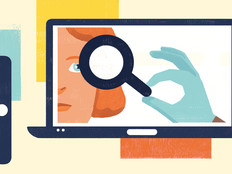4 IT Trends from the HIMSS 2019 Forecast
Healthcare is zooming forward at an accelerated rate of change, facilitated by a number of factors that make traditional healthcare models impossible to maintain.
Perhaps no one says it better than Russell Branzell, president and CEO for the College of Healthcare Information Management Executives, who recently told HealthTech that the healthcare industry at large is at a major inflection point.
“Alongside large-scale changes like payment reform, the shift toward consumerism and globalization, we’re entering a new era of technology, fourth-revolution technology, which encompasses 5G, artificial intelligence, neural networking, drones and chatbots — not to mention that mobile devices have matured to the point where there are very few, if any, communication limitations,” he says.
And these are only a few of the pressures rising up to reshape the healthcare industry. The recently released HIMSS 2019 Healthcare Trends Forecast identifies more forces at work, including “value-based care, rising costs, health system consolidation, the approaching silver tsunami, regulatory pressures, increased consumerization, major technology players entering the market and the ever-expanding potential of digital health tools,” all of which are coming together transform healthcare business models.
So what will all these changes mean for healthcare organizations looking to keep up in the coming year? The HIMSS report identifies four major changes that providers and healthcare IT teams should look out for in 2019 and beyond.
MORE FROM HEALTHTECH: These five trends will drive disruption in health IT this year.
1. Consumers Expect Results from Digital Health
Digital healthcare — artificial intelligence, virtual/augmented reality, wearables and more — has had promise for a number of years, and now it’s time to deliver. As consumer expectations grow, regulatory barriers to innovation will continue to fall. With this change, policymakers will be looking at ways that policy can accelerate time to market for tools can improve patient access to healthcare information, further efficiencies, decrease provider burden and forge new paths for care delivery, according to the report.
“Digital health tools will need to answer for the way technology will increase access to care and narrow gaps in care and coverage. There will be increased pressure to standardize systems for advanced interoperability to help improve the way information is shared and care is administered, and to do so more quickly than ever before,” the report notes.
MORE FROM HEALTHTECH: See how digital health tools can pave the way to better outcomes.
2. Personalized, Patient-Centered Care Takes Charge
Consumers, especially younger ones, are becoming increasingly unhappy with existing care delivery models and turning toward virtual care models, retail clinics and other forms of digital care. This has left an opening for tech giants that understand how to meet consumer demands — such as Amazon and Google — to swoop in and deliver on patient expectations.
“Healthcare systems are not known for their agility, and are challenged to develop solutions that attract and keep healthcare consumers, as well as offer exceptional consumer experiences that are as easy to navigate as online banking and retail interactions,” the HIMSS report notes. These sorts of experiences will manifest in a number of ways, including high-touch, tech-driven primary care for Medicare and Medicaid populations, infrastructure investments that support value-based care initiatives like telehealth and precision medicine, and genomic diagnostics.
“Unless they move to rapidly evolve and change to keep pace with the new disruptors entering the marketplace, healthcare systems will find themselves falling short in the race to attract a new marketplace of consumers unwilling to wait for the care experience they’ve come to expect,” the HIMSS report says of traditional healthcare systems.
MORE FROM HEALTHTECH: See how tech giants plan to use IT to smooth kinks in healthcare.
3. New Care Models Evolve Out of Cost, Demographic Pressures
The silver tsunami is coming, bringing with it more patients with complex health issues. Meanwhile, younger generations expect more convenient, tech-enabled care.
“To meet these demands, health systems, payers and providers will be forced to advance value-based healthcare delivery in ways that keeps costs low both for the industry and the consumer. We’ll see an effort to achieve this, in part, via a greater push into value-based arrangements through growth in Managed Medicaid and Medicare Advantage,” the report notes.
This will mean greater investment in digital health tools (such as telehealth) that can provide 24/7 access to care for patients anywhere, an increased investment in population and public health analytics that can better sift out the social determinants of health, and an increased interest in AI-powered decision support tools.
4. Policy Will Catch Up with Medical Data Use
It’s no secret that the healthcare industry has been a major target for hackers in recent years. To combat this, as the world of healthcare becomes more connected and data-driven, policy changes will focus on improving privacy and security.
“In 2019, policymakers will look to the private sector and their policy counterparts in other countries to figure out what policy changes need to be put into place to protect information sharing,” the report states.
Moreover, while healthcare is largely ahead of the game when it comes to patient privacy, as it begins to take hold in other industries (thanks largely to legislation like the General Data Protection Regulation), privacy will also gather attention from policymakers.
“Healthcare will be pulled into the discussion and analysis as policymakers begin to explore what policy changes need to occur to increase consumer protection and confidence in healthcare data transmission security,” the report notes.









